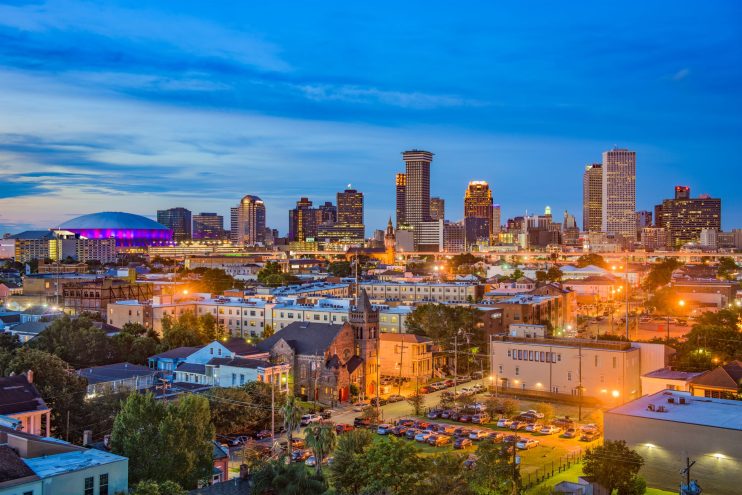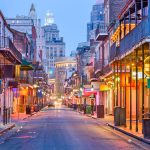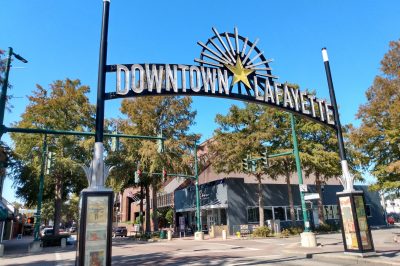There’s something about New Orleans that gets under your skin — in the best way. The moment I arrived, I knew I wasn’t just visiting a city. I was stepping into a rhythm, a spirit, a living story that’s been unfolding for centuries. And at the heart of it all? Jazz.
They call it the birthplace of jazz, but that barely scratches the surface. Music in New Orleans isn’t just heard — it’s felt in your bones. It spills out of French Quarter courtyards, bounces off wrought-iron balconies, and flows through second lines that turn every street into a parade. It’s a city where joy is public, and celebration is a lifestyle.

The French Quarter: Where It All Begins
I started, naturally, in the French Quarter, that vibrant, slightly chaotic heart of the city. With its pastel buildings, gas lamps, and cobblestone streets, it feels like a movie set — if the movie is part romance, part carnival, part ghost story.
Royal Street is where I first felt the pulse. Buskers played everything from Louis Armstrong classics to modern funk, and people gathered around like it was the most natural thing in the world. I wandered into Preservation Hall, an unassuming little venue with peeling paint and history soaked into every surface. Inside, the music was pure, raw, and transcendent. No mics, no fancy lights — just masters of their craft telling stories through their horns and keys.
And then, of course, there’s Bourbon Street. I won’t lie — it’s wild. Neon lights, frozen drinks, and brass bands battling the sounds of the crowd. It’s messy, it’s loud, and it’s unforgettable. I danced with strangers, sang off-key, and laughed harder than I had in months.
A Feast for All Senses
In New Orleans, food is its own form of worship. Every meal felt like an event. I started my mornings with beignets from Café du Monde, powdered sugar covering my fingers (and my shirt). The bitter, chicory-laced coffee was the perfect balance.
I made a pilgrimage to Commander’s Palace, where turtle soup and 25-cent martinis made lunch feel like a ceremony. But honestly, the soul of New Orleans food lives in its holes-in-the-wall. I found myself returning to Cochon Butcher for killer muffulettas and smoked meats, and I grabbed a bowl of gumbo from a dive in the Treme that made me want to write poetry about roux.
And then there’s Frenchmen Street. By day, it’s sleepy. By night, it transforms. Live music pours out of clubs like The Spotted Cat and d.b.a., and the food vendors set up shop with everything from jambalaya to spicy crawfish boil. I even caught a midnight poetry reading tucked between sets — because why not?
Beyond the Music: Culture, History, and Soul
What struck me about New Orleans is that everything here has a story. I took a walking tour through the Garden District, where antebellum mansions tell tales of old money, and massive oaks draped in Spanish moss whisper secrets of the past. Lafayette Cemetery No. 1 was haunting and beautiful, with its crumbling above-ground tombs and wildflowers growing where no one planted them.
I also spent time at the New Orleans Jazz Museum, located in the old U.S. Mint. It’s a treasure trove of artifacts, recordings, and tributes to legends like Louis Armstrong, Sidney Bechet, and Jelly Roll Morton. The exhibits brought the music to life and helped me understand how deeply jazz is woven into the DNA of this city.
For a different perspective, I took a ride on the Steamboat Natchez — a real paddlewheeler that cruises the Mississippi River with a live jazz trio on board. Floating past the skyline with a mint julep in hand and “When the Saints Go Marching In” playing in the background? That moment alone was worth the trip.
A City That Celebrates Life — and Honors Its Losses
New Orleans doesn’t pretend everything’s perfect. It’s a city that’s known tragedy — from Hurricane Katrina to the daily grind of life below sea level. But its resilience is stunning. You see it in the art, hear it in the music, and feel it in the way strangers say hello.
I happened upon a second line parade one Sunday — not planned, just lucky. These traditional brass band processions, often held after funerals or to celebrate life events, are hypnotic. People danced in the streets, waved white handkerchiefs, and followed the band as if pulled by an invisible force. It felt like witnessing pure catharsis — joy and grief and memory, all at once.
Leaving My Heart in the Big Easy
I came to New Orleans for the music. I left with a deep admiration for the people, the culture, the flavors, and the indescribable spirit that lives in every corner of the city. It’s not polished. It’s not perfect. But it’s real — and that’s what makes it magical.
So if you’re thinking about your next trip and want a destination that feeds your soul, challenges your palate, and teaches you to dance again — make it New Orleans. Just be prepared: this city doesn’t let you go.

















